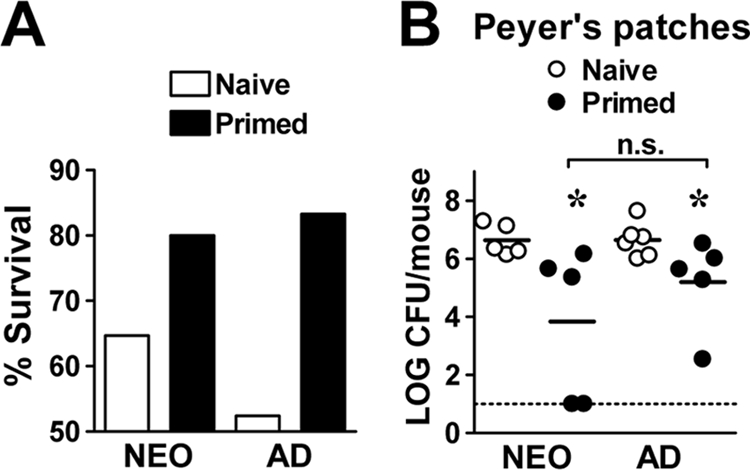FIG. 4.

Mice infected orogastrically as neonates are protected against challenge in adulthood with a high dose of Y. enterocolitica. Neonatal and adult BALB/c mice were infected orogastrically with 2 × 105 CFU of Y. enterocolitica. Nine to 11 weeks p.i., mice were orogastrically infected with 2 × 108 CFU of Y. enterocolitica in parallel with age-matched naïve mice. (A) Weight loss was used as a surrogate marker for mortality; mice that lost over 25% of their body weight were deemed moribund. The bar graphs show the percent survival at 7 days postchallenge of naïve age-matched and primed mice pooled from three independent experiments (17 to 21 mice per group). (B) At 7 days postchallenge, the PP from naïve and primed mice (n = 5 to 6 mice per group) were analyzed for Y. enterocolitica titers. The dotted line is at the limit of detection. Differences were analyzed by the Mann-Whitney test. n.s., not significant; *, P ≤ 0.03 between naïve and primed mice in each group.
